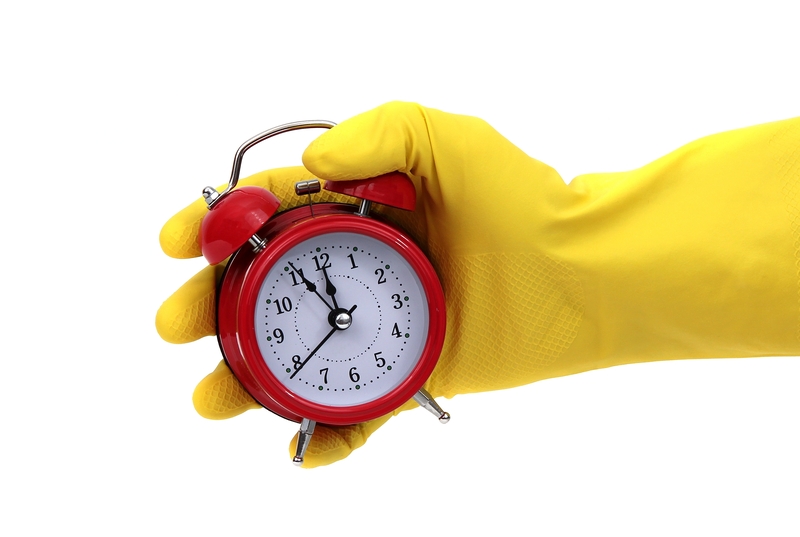Bring back the shine with optimal curtain cleaning methods
Posted on 26/05/2025
Bring Back the Shine with Optimal Curtain Cleaning Methods
Discover comprehensive and effective ways to return the sparkle to your curtains, improve their longevity, and create a fresher living environment. From regular maintenance to deep-clean tricks, learn how optimal curtain cleaning methods can truly transform your home.
Why Clean Curtains Matter More Than You Think
Most homeowners overlook their curtains when deep cleaning their homes. Yet, clean and well-maintained curtains offer more than aesthetic appeal -- they block dust, allergies, pollutants, and even unpleasant odors. Dirty curtains can harbor dust mites, allergens, and bacteria, diminishing your indoor air quality and making your home less healthy.
- Allergy Relief: Removing dust and allergens provides relief to those with respiratory sensitivities.
- Odor Control: Regularly cleaned curtains eliminate musty or food odors from clinging to fabric.
- Prolonged Lifespan: Curtains last longer and retain their color when properly cleaned.
- Enhanced Home Appearance: Sparkling curtains instantly upgrade any room, adding light and freshness.

Understanding Different Curtain Fabrics
To bring back the shine to your curtains, identifying the fabric type is crucial. The fabric dictates which optimal curtain cleaning methods are suitable and which could cause damage.
Common Curtain Fabrics and Their Properties
- Cotton: Durable, often machine-washable, but may shrink if washed at high temperatures.
- Linen: Breathable and stylish; often requires gentle hand washing or dry-cleaning.
- Polyester: Synthetic, resists wrinkles and shrinking; typically safe in the washer.
- Velvet: Luxurious texture; needs delicate handling, often dry-clean only.
- Silk: Delicate and expensive, best cleaned by professionals.
- Sheer: Light and fragile, requiring gentle washing or hand-cleaning.
Step-by-Step Optimal Curtain Cleaning Methods
Appropriately cleaning your curtains not only revives their luster but also prolongs their lifespan. Below are thorough, tried-and-true cleaning methods that can suit a variety of curtain materials. Always check the care label before starting any cleaning process.
1. Regular Dusting and Maintenance
- Vacuum weekly with a soft brush attachment to remove dust, pet hair, and airborne particles.
- Shake the curtains outdoors every month to eliminate accumulated surface dust.
- Spot clean minor stains promptly using a damp cloth and a little mild detergent.
Regular maintenance prevents dirt build-up and reduces the need for frequent intensive cleaning.
2. Machine Washing Curtains: Easy and Effective
Many modern curtains are machine-washable, making them easy to care for at home. Here's how to restore their shine:
- Remove hardware (hooks, rings, and weights) before washing.
- Shake them out to remove excess dust.
- Use a gentle cycle with cold water and a mild detergent.
- Do not overload the washing machine; wash large curtains in smaller loads.
- Hang to air dry or tumble dry on low, straightening creases by hand.
Pro tip: If your curtains have a lining, make sure the lining is machine-washable as well.
3. Hand-Washing Delicate Curtains
Some fabrics require extra TLC. Hand washing is gentle enough for delicate sheers, lace, or embellished curtains:
- Fill a bath or large basin with lukewarm water and mild detergent.
- Gently agitate the curtains in the soapy water for a few minutes.
- Rinse thoroughly several times with cold water to remove soap residue.
- Do not wring; instead, gently press out water and hang them to drip dry.
Hand-washing helps maintain the fabric's integrity and color, giving back its original shine.
4. Steam Cleaning for a Deep Refresh
Another optimal curtain cleaning method is using a fabric-safe steam cleaner. Steam cleaning is ideal for heavy, difficult-to-remove fabrics like velvet or thick drapes because it:
- Sanitizes by killing dust mites and bacteria.
- Deodorizes by neutralizing odors.
- Refreshes fabric without taking down the curtains.
Simply use a handheld steamer, following the fabric grain from top to bottom. Always test in a discreet area first.
5. Spot Cleaning Stubborn Stains
To maintain the original shine, treat stains quickly. For food spots, ink marks, or pet mishaps, try this approach:
- Blot (don't rub) with a clean, damp cloth as soon as the stain appears.
- Mix a small amount of gentle detergent and water, and use a soft sponge to gently dab the area.
- For oil-based stains, sprinkle some baking soda or cornstarch to absorb excess oil, then brush off before spot-cleaning.
- Rinse the spot with clean water and allow to air dry.
Be cautious with colored curtains, as harsh cleaners may cause fading.
6. Professional Curtain Cleaning Services
If your curtains are made of fragile, non-washable, or specialty fabrics, or if they have persistent stains and odors, professional curtain cleaning is your best option. Experts use specialized detergents, equipment, and techniques to bring back the shine without damaging your drapes..
- Look for certified, reputable cleaners with experience in handling your curtain fabric.
- Request a fabric-specific cleaning process to avoid shrinkage or color loss.
- Discuss stain removal and deodorization options.
This method ensures optimal cleanliness and restoration with minimum hassle on your part.
Expert Tips for Long-Lasting Curtain Brilliance
After using the best curtain cleaning methods, keep them looking their best:
- Avoid direct sunlight exposure, which can fade colors and weaken fabric over time.
- Install blinds or UV-blocking window films to protect curtains from intense light.
- Regularly rotate curtains to ensure even fading and wear.
- Use a fabric freshener spray for a quick scent boost between washes.
- Address stains and odors promptly to prevent permanent marks.
Special Attention: Tips for Specific Curtain Types
Sheer Curtains
Delicate and often translucent, sheers are prone to snagging and stretching. Always clean with cold water and handle with extra care when washing or hanging.
Blackout Curtains
These have a thick, rubbery lining for light blocking. Usually, vacuum with a soft brush and spot clean the outer fabric. Avoid machine washing as water can damage the lining.
Shower Curtains
Shower curtains (especially fabric ones) collect soap scum and mildew. Most are machine washable; add a towel in the wash to scrub off build-up. Dry thoroughly before rehanging.
Thermal or Insulated Curtains
Thermal curtains trap dust inside their layers. Vacuuming and periodic professional cleaning keep the insulation effective as well as looking fresh.
DIY Natural Solutions for Curtain Cleaning
Many homeowners prefer eco-friendly curtain cleaning methods. Use these easy homemade solutions to safely clean and deodorize your curtains:
- Baking soda: Absorbs odors and can be sprinkled on dry fabric before vacuuming.
- White vinegar: Diluted with water, it tackles light stains and neutralizes odors.
- Lemon juice: Brightens whites and helps with yellowing, especially on sheers and lace.
- Essential oils: Mix a few drops with water in a spray bottle for a natural air freshener.
Avoid harsh chemicals for delicate or colored fabrics as these may cause fading or fiber damage.
How Often Should You Clean Your Curtains?
Establishing a regular schedule for maintaining optimal curtain cleaning standards ensures your home consistently looks and feels its best. As a rule of thumb:
- Light dusting and vacuuming: Once a week
- Deep cleaning (washing or professional): Every 4 to 6 months
- Spot cleaning stains and spills: Immediately
- Steam cleaning for heavy drapes: Every 6 months
Families with pets, smokers, or allergies may need more frequent curtain cleaning to maintain optimal air quality.

Frequently Asked Questions About Curtain Cleaning
Can I put my curtains in the washing machine?
Yes, if your curtain's care label indicates it's safe for machine washing. Use a gentle cycle and mild detergent. Always remove hooks, rings, and other hardware first.
Will cleaning curtains shrink them?
Some fabrics like cotton and linen may shrink if washed in hot water or dried at high heat. Always follow the care instructions and opt for cold water and air drying when possible.
How do I remove odors from curtains?
Air them outdoors, use a gentle fabric spray, or sprinkle baking soda over them before vacuuming. For persistent odors, try steam cleaning or professional curtain cleaning services.
Can blackout or thermal curtains be cleaned at home?
Generally, vacuuming and spot cleaning are safe at home. Always check the manufacturer's label - some linings can be damaged by water or high heat from dryers.
Conclusion: Restore the Sparkle with Optimal Curtain Care
Clean curtains are more than a finishing touch -- they are essential for a healthy, radiant home. By implementing the best curtain cleaning methods for your specific fabric, you ensure lasting shine, vibrant color, and freshness. Whether you rely on professional curtain cleaning or choose DIY tips, consistent care will keep your drapes looking luxurious and long-lasting. Use the tips above to bring back the shine with optimal curtain cleaning methods and transform your space into a bright, inviting sanctuary!
With these strategies, your curtains will continue to sparkle year-round, enhancing the beauty and comfort of your home.




